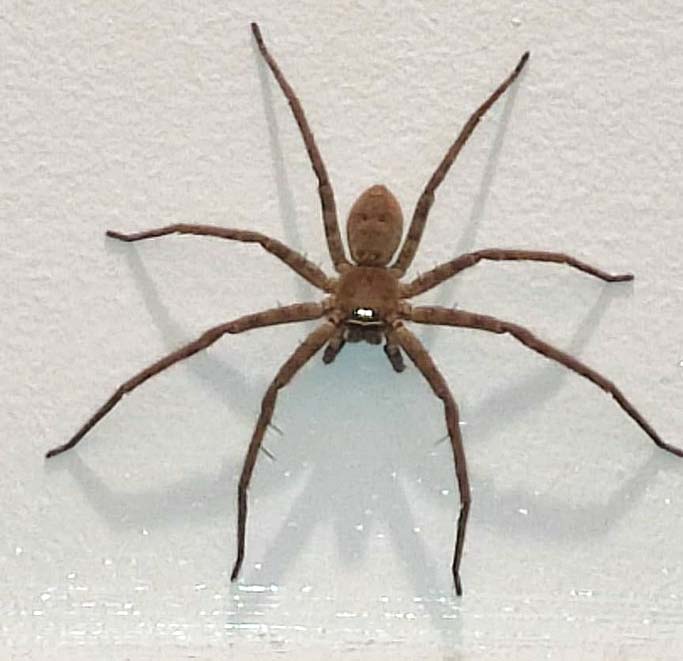ONOMATOPOEIC NAME
There are still many Birds around the area, including the Jungle Crow and other colorful ones whom I cannot identify. However, I think it is time that I move on from Insects and Birds to Reptiles.
Like I said, the Insects of this place are of a different level in terms of size and abundance. It is to no surprise that the predators here are also of hefty proportions. Let me start with a familiar subject.
I am sure most of us are aware of what a Tuko is. While many of our readers probably never saw one before, most would at least have heard the animal’s call during excursions to wooded areas. During dusk or at the dark of night, we would hear an eerie call: “Tuko! Tuko!” Hence, their name.

It is funny that, during a gathering of international friends, the Japanese would argue that the call sounded more like “tokage” while the Indonesians would argue that the sound is more like “toke”. Hence, according to them, the Tuko is called Tokage in Japanese and Toke in Indonesian. I am not so sure if these are facts or if they were just pulling my leg.
What sets Palawan apart from most places I have been to in the Philippines is the abundance and size of our Tuko. A 12-inch specimen with a hefty girth is not unheard of. Their abundance is even more pronounced in wooden areas similar to my temporary place of residence.
HOME ACCIDENTS
We had an almost daily encounter with them in my brother’s house. In fact, there was a breeding pair residing just above the study area of my kids. When they get bored of studying, they would peek into the gap between the walls to see how many eggs were already laid.
Initially, my kids were scared to death of these creatures. They would run out of their rooms every time one of these Tuko decided to drop by for a visit. As time passed, they got used to living with them. The breeding pair did not mind living with us either, because they bred three batches of eggs during our stay there.
And we got to see tiny little Tuko roaming around the house, trying to establish a territory for themselves. We had to literally throw them out, for their own protection. Inexperienced young usually die getting squashed practically anywhere: sliding doors, swing doors, moving appliances, boxes, bags, folder files…. you name it!
Due to the abundance of young Tuko in the house, we did witness some tragic deaths. So, we decided that whenever we saw a small Tuko, we would throw them out into the woods.
PERSISTENT BITES
The Tuko bite, while not deadly, is actually very strong. And those darn little teeth are very sharp. They like to open their mouth to ward off threats but rarely follow through with a bite. But when they do bite, it is really painful and can draw blood. Then again, their jaws are not powerful enough and their teeth are not big enough to maim or cause serious injury.
If they do bite, they bite long and hard. I have been bitten by a small specimen. He did not release his bite for a minute. It was only when I put my hand down and he could feel his feet touching the ground when he decided to let go.
Needless to say, we like Tukos. They love to eat Roaches. However, they also like to eat another ally of ours, the Huntsman Spider, another Roach hunter.
BENIGN HUNTERS
Huntsman Spiders are really fast. This is probably the main reason why people are so freaked out by them. Not only are they big and have those freakishly long legs, but they would spring out of nowhere and run like the wind, and the startled people will have the impression of getting “chased by a giant spider.”
What’s more, these Spiders can squeeze into the small crevasses of walls and furniture, even with their long legs, so they always turn up where people least expect them to be.
Truth be told, I have never heard of anyone getting bitten by a Huntsman Spider. I have, on more than one occasion, had one falling on me and running around my shoulder and torso before I was able to swat it off, but they did not bite. My father also used to toy with them by chasing them until they would tire. He would then scoop up the Huntsman Spider with his hand and the Spider would just stay still. I have been defeated by my ten-year-old daughter in this feat because she dared to try it while I never did.
HUNTED REPTILES
Going back to the Tuko, they were almost hunted to oblivion during the early 2000 Tuko craze.
I think it was a few years before the COVID pandemic when word got around that people from Manila were buying Tuko for Php 1000 apiece. I do not know if people were really getting paid, but the Tuko was aggressively hunted by kids and adults alike.
I know dried Tuko has been sold as a home remedy for common illnesses in Ongpin and China Town for decades, but they do not really sell like hotcakes. So, I was taken aback by how the Tuko was hunted down during those years.
It was quite eerie that I did not hear the Tuko’s call for quite a long time. Fortunately, the government enforced laws against the capture and trade of Tuko. Or, probably, people just realized they did not really taste like hotcakes. So, now, the familiar Tuko call rings again in every street corner of the suburban barangays.
(To be continued.)








